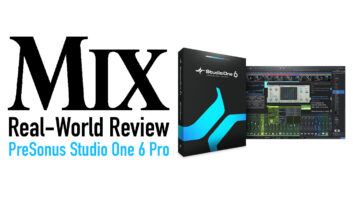Change is inevitable. In business, you are either growing or dying a slow death; no business simply stays the same. There are too many outside pressures—for instance, competition in the market or distribution channels, emerging technology that is creating a shift in demand, or even new government regulations that may be forcing one to conform. In pro audio, the shift in wireless frequencies is a perfect example of a technology shift being forced on manufacturers.
Radial Engineering began life as Cabletek, a manufacturer of guitar and mic cables, concert snake systems and custom patchbays for studios. At the time of this story, I had just spent several years learning the distribution model at Fender Canada (TMI), where we imported products from companies like Alesis and Audix from the United States and Akai and Casio from Japan, and sold them to dealers in Canada. The biggest challenge was being able to set prices so that they were profitable while remaining competitive with pricing in the United States, the biggest and most competitive market on the globe.

My first task at Cabletek was to secure “exclusive distribution” in Canada for lines that we used in manufacturing, such as Mogami cable and Jensen transformers. This way we could both sell premade products such as mic and guitar cables to regular music stores and deliver bulk to larger sound rental companies that had in-house manufacturing. I spent years traveling across Canada putting on “We Hate Noise” clinics, where I would explain proper grounding techniques and the benefits of quad-balanced, low-capacitance wire and transformers to eliminate hum and buzz in the studio; how dynamic microphones work and the benefit of a tighter hypercardioid pattern when it comes to eliminating feedback on stage; and the usefulness of acoustic panels and how they are used to create a relatively neutral mixing environment for the home studio. As this was pre-internet, dealers were supportive because the tour provided their customers with useful education they couldn’t get elsewhere. Clinics were usually well attended, and because we put in the hard work, the results from our efforts came quickly.
I met with a buyer at a large contractor in Montreal, who asked me why a cable company was trying to sell him amplifiers and microphones. This hit a nerve. I realized that the Cabletek name pigeonholed the company, so I changed the name to C-Tec to make it less cable-centric. I then began chasing down brands that I felt could be added to our product range and be sold through our small but growing dealer network.
At this point in the story, it is important to understand the dynamic of a distribution firm. Distributors are middle men. In the United States, there are very few “true” distributors; most, in fact, would be better tagged as wholesalers.
Wholesalers serve a purpose by providing smaller music stores, sound companies and contractors with products that a manufacturer deems too expensive to service directly. Wholesalers typically work on lean margins, maybe 8 to 12 percent, and make it up in volume by offering a wide arrange of brands. Their mantra is to follow a “flavor of the month” or “most popular” approach, whereby they will have items like a Shure SM58 or Samsung TV on the shelf that will ship every day to fill orders.
A distributor is different in that it tends to be the exclusive representative for a brand in a given territory. This is how most of the music and pro audio industry is set up outside the United States. For instance, there is only one distributor for Shure in Canada, called SF Marketing. In France, Shure is distributed by Algam. When you take on the responsibility as the exclusive distributor for a brand, you cannot bring on a competitive brand, so you won’t see a distributor handling two microphone brands, for instance. As the manufacturer’s exclusive agent, they have no choice but to sell that brand’s wares, even when the market may be hot for something else. If they deliver the sales, all is good. If they do not, you can expect that the manufacturer will find another distributor that is willing to do the hard work.







